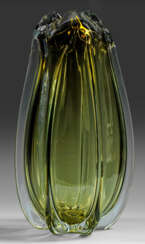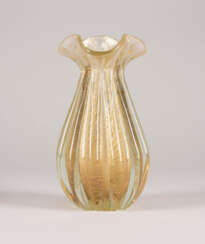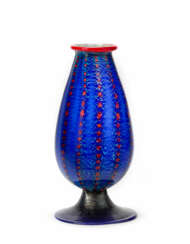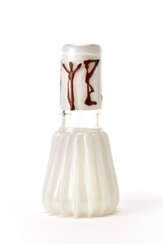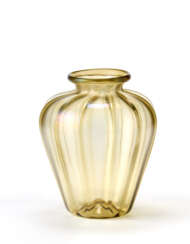murano ribbed vase




Umberto Bellotto is an Italian artist and craftsman.


Ercole Barovier is an Italian glass artist and designer.
In 1936 he founded Ferro Toso Barovier together with his brothers Dezio and Artemio Toso, which became Barovier — Toso & Co. in 1939 and Barovier & Toso in 1942.
He was also artistic director of the glassworks until 1972.


Napoleone Martinuzzi is a famous Italian artist, sculptor, designer and ceramist.


Ercole Barovier is an Italian glass artist and designer.
In 1936 he founded Ferro Toso Barovier together with his brothers Dezio and Artemio Toso, which became Barovier — Toso & Co. in 1939 and Barovier & Toso in 1942.
He was also artistic director of the glassworks until 1972.


Fulvio Bianconi is an Italian graphic designer and illustrator. He collaborated with Venini, creating pieces that became true icons of Murano art glass.


Carlo Scarpa was an Italian architect, influenced by the materials, landscape and the history of Venetian culture, and by Japan. Scarpa translated his interests in history, regionalism, invention, and the techniques of the artist and craftsman into ingenious glass and furniture design.
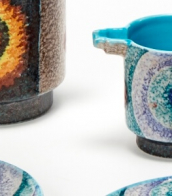

Riccardo Licata is an Italian artist known for his large mosaic paintings in public spaces in Europe.
He studied at the Academy of Fine Arts in Venice and was an active member of the international artistic movement "Space".
Licata showed his multifaceted talents in different fields of art: he worked on theatrical sets and costumes, was a sculptor and engraver, master of mosaics and a glass designer.
But his most important brainchild is the artistic language he created, a kind of alphabet consisting of symbols and graphic strokes that will characterize most of his works. These features, which Licata himself defines as imaginary letters, "graphic and pictorial writing" that draws inspiration from the language of music, are used by the artist to create works that will make him famous.
Licata lived and worked in Paris and Venice, was appointed professor of mosaics at the Ecole Nationale Supérieure des Beaux-Arts in Paris, professor of fine arts at the Sorbonne and of printmaking at the Académie Götz (Paris).


Riccardo Licata is an Italian artist known for his large mosaic paintings in public spaces in Europe.
He studied at the Academy of Fine Arts in Venice and was an active member of the international artistic movement "Space".
Licata showed his multifaceted talents in different fields of art: he worked on theatrical sets and costumes, was a sculptor and engraver, master of mosaics and a glass designer.
But his most important brainchild is the artistic language he created, a kind of alphabet consisting of symbols and graphic strokes that will characterize most of his works. These features, which Licata himself defines as imaginary letters, "graphic and pictorial writing" that draws inspiration from the language of music, are used by the artist to create works that will make him famous.
Licata lived and worked in Paris and Venice, was appointed professor of mosaics at the Ecole Nationale Supérieure des Beaux-Arts in Paris, professor of fine arts at the Sorbonne and of printmaking at the Académie Götz (Paris).



















